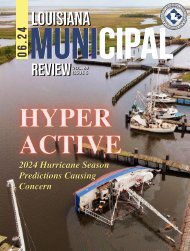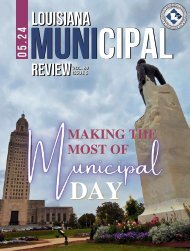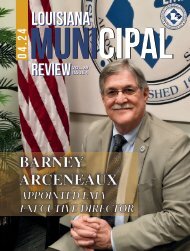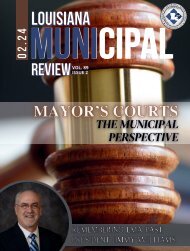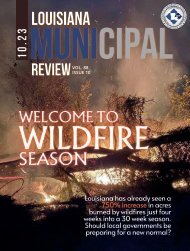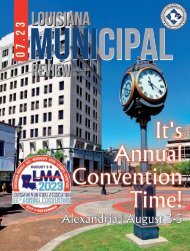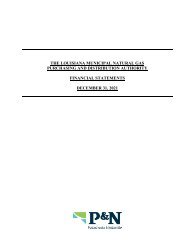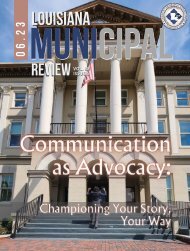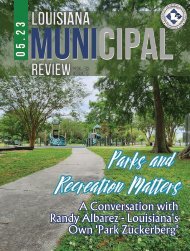GOHSEP Elected_Officials_Manual_2015
Create successful ePaper yourself
Turn your PDF publications into a flip-book with our unique Google optimized e-Paper software.
planning best practices<br />
Best practices suggest including representatives from<br />
the emergency management community; law enforcement;<br />
fire protection services; emergency medical services;<br />
public health, hospitals and health care facilities; public<br />
works; social services; the private sector; and other<br />
nongovernmental organizations (NGOs) and stakeholder<br />
organizations in the planning effort either as members of<br />
the planning team or as important community resources for<br />
data collection and review.<br />
to a disaster or emergency. EOPs identify those with<br />
operational responsibilities, and how to fulfill them.<br />
The EOP defines the process by which the jurisdiction<br />
prepares for, responds to, and recovers from disasters<br />
and emergencies.<br />
The Parish Office of Homeland Security and<br />
Emergency Preparedness (OHSEP) should create and<br />
maintain an emergency plan that is specific to the<br />
Parish. EOPs are not intended to “start from scratch”,<br />
but rather inventory and analyze existing resources,<br />
assets and planning efforts, integrating those into the<br />
EOP. The planning process should include senior<br />
officials and community recovery stakeholders<br />
throughout the process to ensure understanding and<br />
approval. Best practices recommend a collaborative<br />
and research-based analytical approach that<br />
identifies and ensures consensus on a shared<br />
understanding of the community situation – including<br />
vulnerabilities, capacity to address vulnerabilities, and<br />
risk and available resources.<br />
Like the State EOP discussed in the previous<br />
section, the Parish EOP guides Parish activities,<br />
investments and emergency operations to<br />
eliminate or reduce disaster impacts. While not<br />
required under LRS 29:729 B., the following list<br />
of activities and outcomes are identified as those<br />
things the Parish EOP may seek to do:<br />
• Prevent and minimize injury and<br />
damage caused by disaster or emergency.<br />
• Provide for emergency relief and prompt<br />
and effective response.<br />
• Identify and address vulnerabilities.<br />
• Make recommendations for zoning,<br />
building and other land use controls,<br />
safety measures, and other preventative<br />
and preparedness measures.<br />
• Provide assistance to local officials in<br />
designing local emergency action plans.<br />
• Authorize and create procedures for<br />
the construction of temporary works<br />
to protect against or mitigate danger,<br />
damage or loss from disasters, or other<br />
emergencies.<br />
• Catalog and distribute information on<br />
Federal, State and private disaster and<br />
emergency assistance.<br />
• Organize manpower and chains of<br />
command.<br />
• Coordinate Federal, State and local<br />
homeland security, disaster or<br />
emergency activities.<br />
• Coordinate with the State EOP, Federal<br />
partners, other State agencies and local<br />
governments.<br />
• Include:<br />
»»<br />
Parish hazard plans.<br />
»»<br />
Hurricane evacuation and<br />
shelter plans.<br />
»»<br />
Other types of emergency<br />
planning.<br />
»»<br />
Pet evacuation and sheltering<br />
plans.<br />
»»<br />
Private-sector participation.<br />
2.2.1 Parish EOP Page 2 of 4



